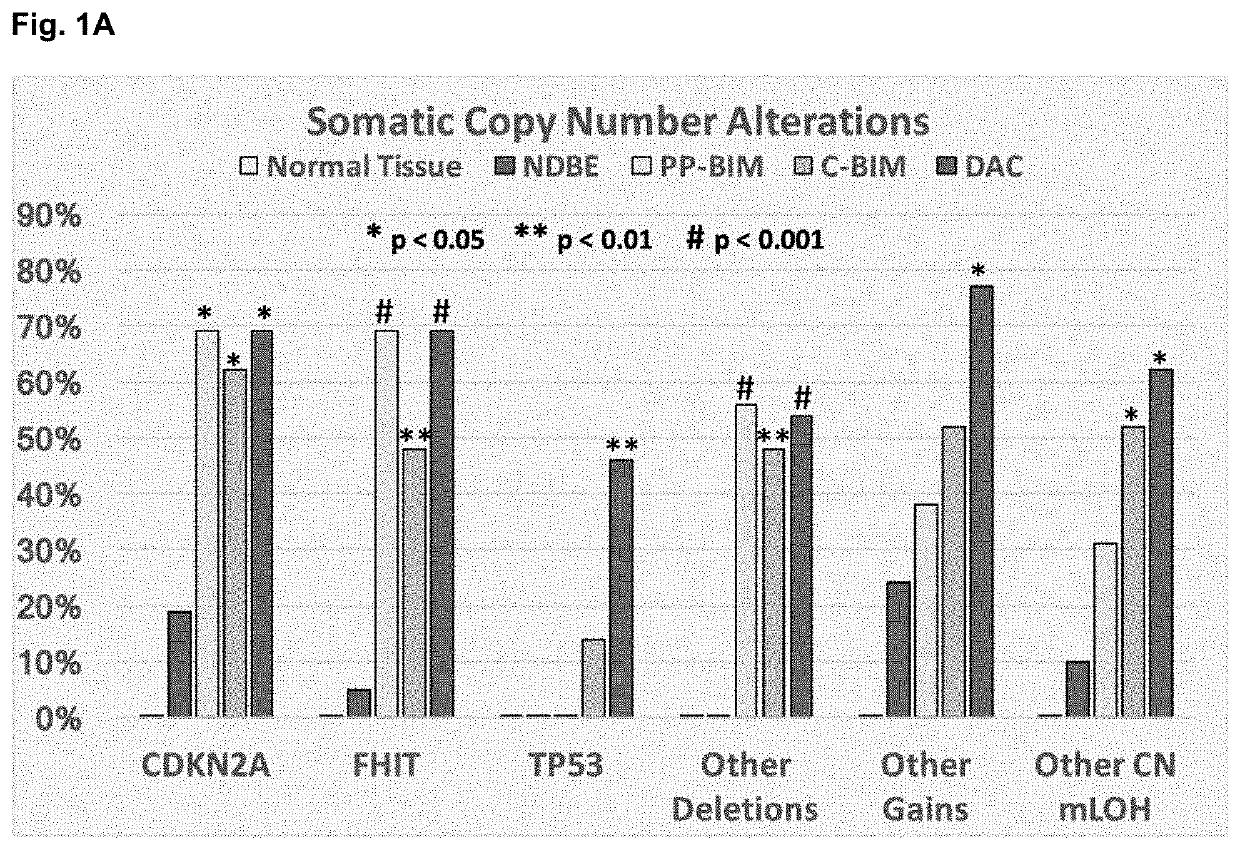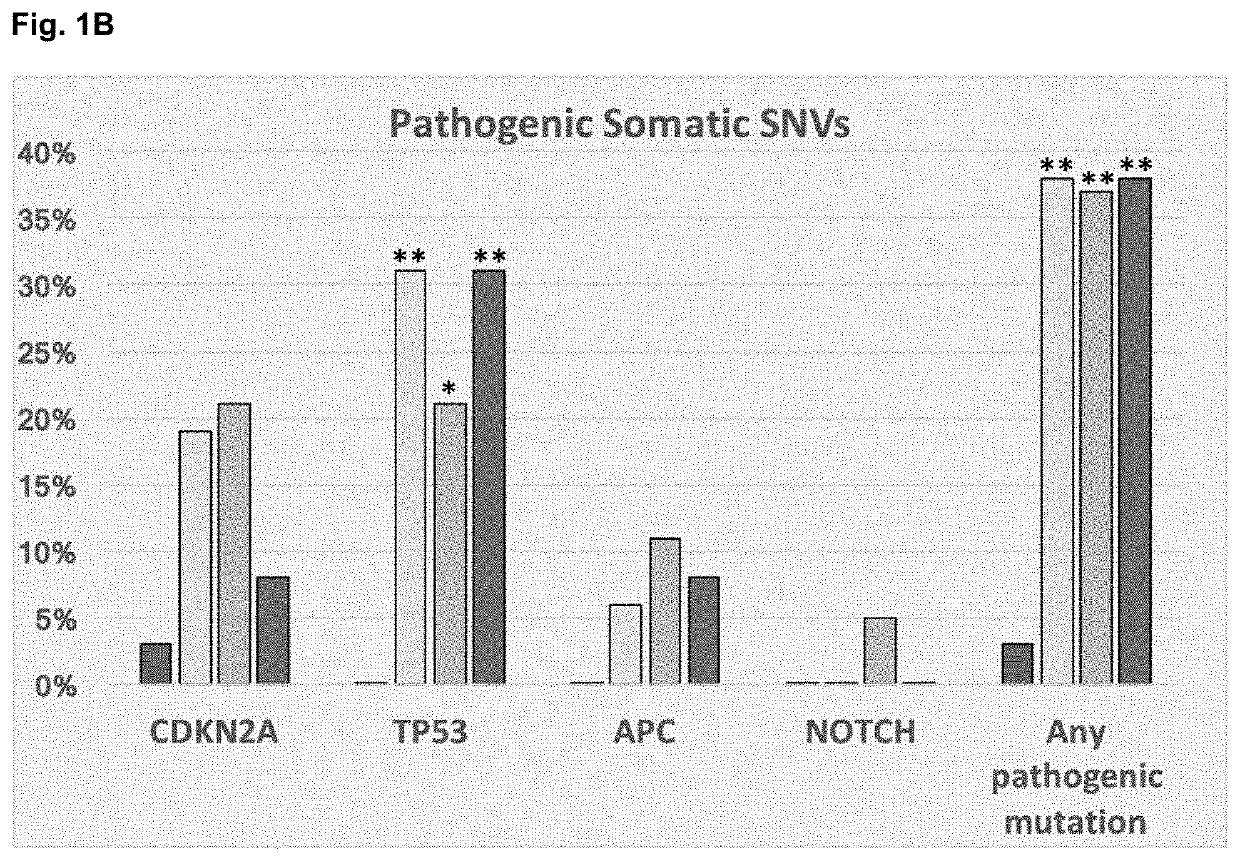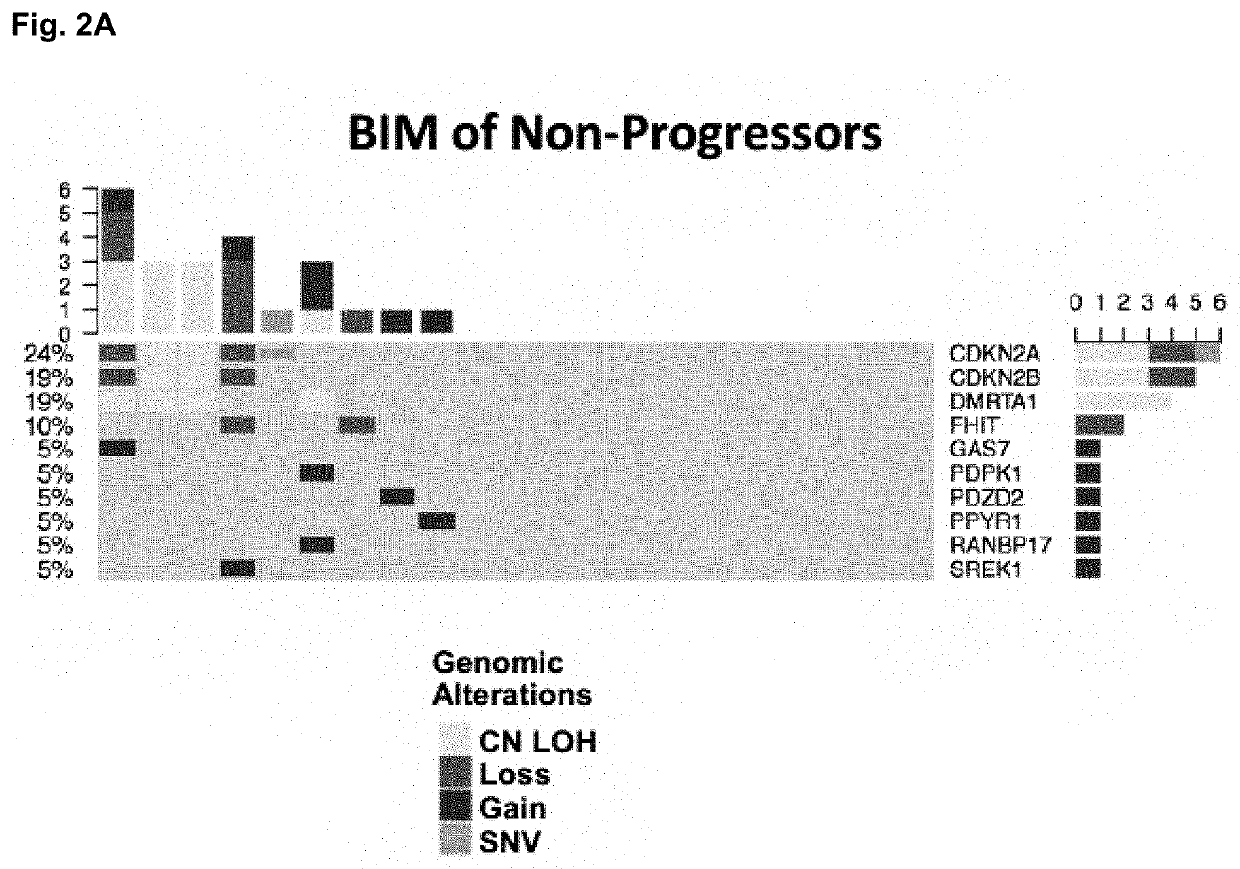Barrett's esophagus progression to cancer gene panel and methods of use thereof
a technology of esophagus and cancer, applied in the field of barrett's esophagus progression to cancer gene panel and methods, can solve the problems of limited knowledge of genomic alterations and the overall 5-year survival of patients with eac is below 19%, and achieve the effect of increasing the frequency of the subject's clinical screening
- Summary
- Abstract
- Description
- Claims
- Application Information
AI Technical Summary
Benefits of technology
Problems solved by technology
Method used
Image
Examples
example 1
Methods and Materials
Patients and Sample Characteristics
[0109]The primary objective of this study was to identify patients with longitudinal samples of BE, before progression to dysplasia or adenocarcinoma, in order to identify genomic alterations that characterize BIM tissues of patients who develop future dysplasia or adenocarcinoma. One specimen was tested for each patient, from FFPE-embedded tissue blocks generally including multiple biopsy fragments containing intestinal metaplasia (BIM), or from representative areas of BIM microdissected from EMR or surgical resection specimens.
[0110]Sixty-three patients were included in the study, divided into four groups (see Table 1):
[0111]Group 1: Eighteen progressor patients (pre-progression-BIM) with a mean age of 61.5 years (range 43-77, standard error of the mean [SEM]=2.2), 14 male and 4 female, were included in this group. The median time of surveillance from the tested pre-progression-BIM biopsy sample to first diagnosis of dysplasi...
example 2
Somatic Genomic Copy Number Alterations in Pre-Progression Non-Dysplastic Barrett's Intestinal Metaplasia are Highly Prevalent in Patients Who Progress to Dysplasia and Adenocarcinoma
[0138]Most BE patients who are on endoscopic surveillance have BIM, negative for dysplasia, and only a small subset of these patients will progress to dysplasia / EAC. Genomic characterization, beyond histopathology, of BIM samples that are negative for dysplasia may be useful to separate progressors from non-progressors to better tailor endoscopic surveillance and therapy. Therefore, we identified a group of patients with FFPE endoscopic biopsies obtained before the development of dysplasia / EAC (described as baseline BIM, pre-progression-BIM), and compared them with BIM of patients who did not progress to dysplasia / EAC (NDBE patients), both groups representing longitudinal cohorts (see FIG. 4 for representation of progression and longitudinal sampling of the patient groups).
[0139]Thirty-seven patients ha...
example 3
Somatic Genomic Copy Number Alterations in Non-Dysplastic Concurrent Intestinal Metaplasia, Dysplasia, and Adenocarcinoma Lesions of Progressors
[0144]Twenty-one cases of concurrent-BIM were tested with SNP arrays (Table 1). Six patients were from the progressor group with baseline pre-progression-BIM tested. Fifteen additional concurrent-BIM lesions tested were from patients without baseline pre-progression-BIM available. Thirteen dysplasia / EAC lesions were tested with SNP arrays; ten were from progressor patients with baseline pre-progression-BIM and 3 did not have pre-progression-BIM tissues available (Table 1). The tested EAC lesions were all intramucosal adenocarcinomas, except cases 8 (pT1b) and 5 (pT3).
[0145]As summarized in Table 3 and detailed in Tables 5 and 6, losses of 3p14.2 involving FHIT exon 5 were present in only one NDBE patient (5%), and were more frequent in dysplasia / EAC (69%, P=0.0008 NDBE) and concurrent-BIM (48%, P=0.007 vs. NDBE). Likewise, deletions or copy ...
PUM
| Property | Measurement | Unit |
|---|---|---|
| length | aaaaa | aaaaa |
| median time | aaaaa | aaaaa |
| length | aaaaa | aaaaa |
Abstract
Description
Claims
Application Information
 Login to View More
Login to View More - R&D
- Intellectual Property
- Life Sciences
- Materials
- Tech Scout
- Unparalleled Data Quality
- Higher Quality Content
- 60% Fewer Hallucinations
Browse by: Latest US Patents, China's latest patents, Technical Efficacy Thesaurus, Application Domain, Technology Topic, Popular Technical Reports.
© 2025 PatSnap. All rights reserved.Legal|Privacy policy|Modern Slavery Act Transparency Statement|Sitemap|About US| Contact US: help@patsnap.com



